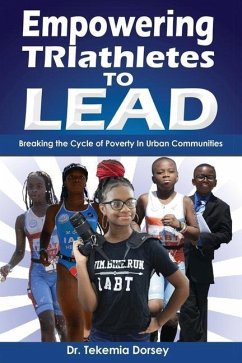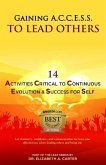The 2nd book in this series, Empowering TRIathletes To Lead; Breaking the Cycle of Poverty In Urban Communities demonstrates how the triathlon sport used as a foundation in programming positively contributes to the transition of urban youth in behavior, leadership, advocacy and civil engagement. Building on the foundation set in Thought Leader: The Future of the Urban Triathlon Sport (Simons & Simons, 2020), Dorsey shares Case Studies of a 360 degree of transition urban youth undertake that helps them prepare for the real world. Using Dorsey's Leadership Models (2006) derived from a theoretical and conceptual framework, Dorsey's nine pillars walk urban youth through a metamorphosis process that yielded far greater results and transformation as expected. Youth ages 9-15 years old from three of the largest urban cities in Maryland engaged in a summer hybrid and fall program that transform their community, their family, and most importantly, themselves. Building on the phenomenological research completed in awarding of the author's doctoral degree (2006), the case study expands on the previous research while yielding greater results for the targeted population of underserved/ underrepresented youth. The purpose of the program was to combat barriers preventing underrepresented/underserved youth from success through the triathlon sport. The program design included (1) Leadership Training & Development Through STEM, (2) Workforce Development Education & Certification, (3) Career and College Readiness, (4) Health and Wellness, and a (5) Community and Civic Engagement Project. Data was collected via pre and posttest, parental feedback, participants' journal entries, unit exit tickets, feedback from partner organization, and more qualitative data such as interviews, collection of completed assignments, cognitive and >The goal of 80% graduating from the program and demonstrating a change in mental, physical, intellect, and behavior. There were limitations due to its hybrid structure and buy-in from youth/parents. Based on the author's hypothesis, validity exists that provides a baseline to continue research with the current targeted population and research design with other youth across the United States. Based on the author's hypothesis, validity exists that allows a deeper understanding that quality research was achieved and provides a baseline to continue research with the current targeted population and research design with other youth across the United States. This is recommended that this program is replicated to increase benefits to the targeted audience. Preparation programs for youth are highly needed due to the most recent statistics and the CoVid19 Pandemic has demonstrated that having degrees and lacking skill sets for adults were not enough to decrease high unemployment rates therefore, if we do not change the focus with our youth, those living in poverty will increase sufficiently in the years to come placing youth and families in more despite conditions than CoVid19.
Hinweis: Dieser Artikel kann nur an eine deutsche Lieferadresse ausgeliefert werden.
Hinweis: Dieser Artikel kann nur an eine deutsche Lieferadresse ausgeliefert werden.








